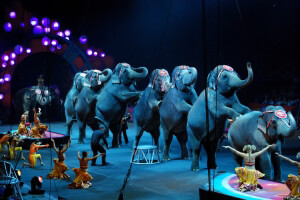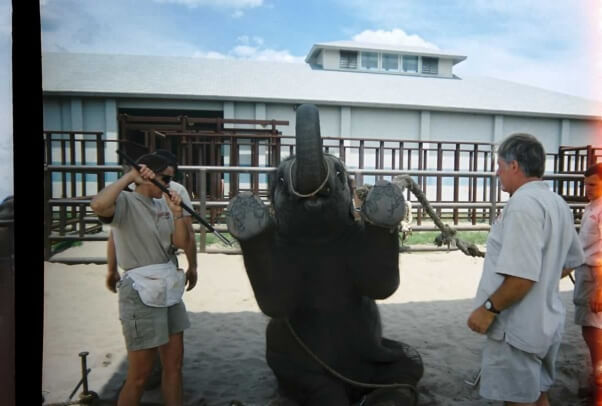
Most people agree that true works of art showcase an artist’s creativity and talent, rather than providing cheap shock value. The Guggenheim Museum in New York had to think hard about this when it was bombarded with complaints about a planned installation that included movies of previously staged cruel and gratuitous torment of animals, including tattooed pigs and a live display of insects and reptiles being eaten by their predators. The museum did an about-face and pulled these works by Chinese artists out of the show—and rightfully so.
Victory! After pressure from PETA, @guggenheim pulls cruel dogfighting, live animals, & tattooed pigs displays. https://t.co/zZlx9UomGE
— PETA (@peta) September 26, 2017
One display that was to be a part of its “Art and China After 1989: Theater of the World” exhibition was a video of four pairs of “fighting” dogs straining to attack one another while chained to a treadmill. Even though the display is a video, real dogs were tormented to create it when it was filmed live in 2003. The increasingly agitated dogs are seen becoming more and more fatigued and eventually foaming at the mouth as they pull against their chains and struggle to reach each other.
No one should have had to point out to The Guggenheim that dogfighting is an ugly, violent, illegal activity and that featuring this blood sport, even as a metaphor for human violence, not only is unacceptable but also rewards the artist for having tormented the dogs.
In dogfights, two dogs are put in a pit where they are encouraged to rip each other to shreds. They may be injected with steroids, and some breeders go so far as to sharpen their dogs’ teeth, cut off their ears (to prevent the opposing dog from latching on), and add cockroach poison to their food so that they will taste bad when bitten. When not fighting, dogs are restricted by short heavy chains. If they won’t fight or they lose fights, they often become “bait” animals, and many are abandoned in alleyways, tortured for fun, set on fire, electrocuted, shot, drowned, or beaten to death, as people will recall from the Michael Vick case.
Another piece in the planned installation was a display at which visitors were shown caged insects and reptiles devouring each other. The third display shows two confined pigs, their bodies covered with nonsensical English words and invented Chinese characters, having sex before an audience.
To spin any of these as art is to set no limits on what art can be: Snuff videos were also once defended as art.
There is nothing intellectually provocative about these displays, and the fact that the animals are not willing participants in their use as props detracts from any stated broader meaning. The artists can defend them as esoteric imagery, but the suffering of dogs forced to fight, pigs restrained and tattooed, and animals confined with other animals for the sole purpose of allowing spectators to watch them be killed is incontrovertibly real. Anyone who finds pleasure in watching animals kill each other surely needs professional help.
The conversation that this spectacle has sparked is valuable, because myriad abuses perpetrated against animals in China—from bludgeoning dogs in order to procure leather for coat trim and gloves to paying to feed live animals to tigers at the zoo—are often incomprehensible. Video footage shows circuses chaining bear cubs up by the neck in order to train them to walk upright and animals on fur farms being killed by painful electrocution. Animal protection laws are non-existent. Withdrawing these pieces sends a strong message to China that its anti-animal antics are not acceptable and that animals are widely thought to deserve respect.
Art institutes could learn from the College Art Association, which has principles in place for artists engaging in any practice using live animals, including that “[n]o work of art should, in the course of its creation, cause physical or psychological pain, suffering, or distress to an animal.”
Museums should continue to provoke thought, discussion, and debate. But what they should not do is become circus sideshows.
The post Museums Are Not Circus Freak Shows appeared first on PETA.








